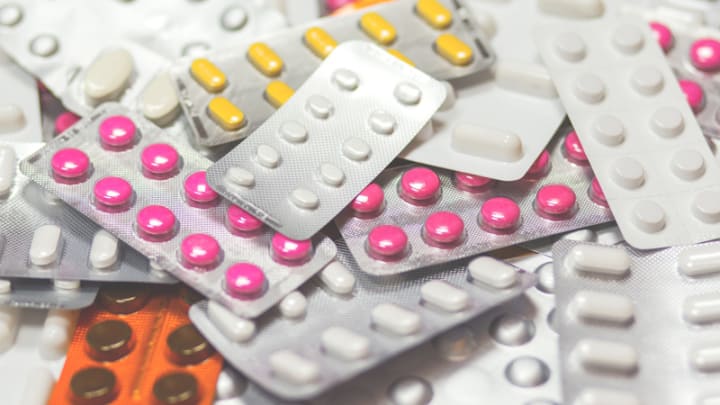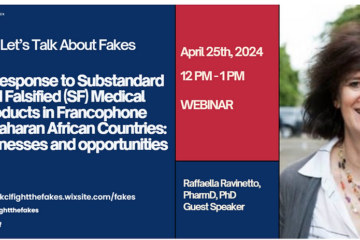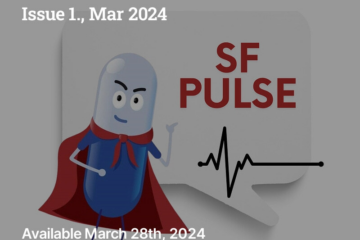
This article was originally published in Devex.
Poor-quality medicine: A global pandemic
By Devex Editor // 29 June 2017
Each year, the proliferation of substandard and falsified medicines puts the lives of millions of people — particularly those living in developing countries — at risk. According to the International Federation of Pharmaceutical Manufacturers and Associations, “only 20 percent of [World Health Organization] member states have effective, well-developed drugs regulation systems, and 30 percent of members have no or very limited regulation in place.” In 2015, a group of researchers from the American Journal of Tropical Medicine and Hygiene even called the proliferation of poor-quality medicines a “global pandemic.”
Cracking down on the issue of falsified and substandard medicine, however, is a daunting task involving the cooperation and coordination of many different stakeholders, from regulators to legislators, to manufacturers, distributors and suppliers. Here, Devex looks at some of the causes of the proliferation of poor-quality medicine, introduces some of the key challenges to prevent this and examines the strategies that seem to be working.
The primary causes of poor-quality medicine
There’s no doubt that the numbers of substandard and falsified medicines are on the rise: In 2011, Operation Pangea, Interpol’s flagship pharmaceutical investigation, seized 2.4 million illicit pills. In 2015, that number spiked to 20.7 million. But the falsification of medicine is only one of the causes of poor-quality pharmaceuticals. Other medicines are substandard due to poor manufacturing conditions or deterioration during transportation, distribution and storage.
On the government level, insufficient regulation and quality standards also play a major role, as does a lack of technical knowledge among local manufacturers. Many developing countries also lack the resources — both in terms of personnel and lab equipment needed to undertake regular pharmaceutical audits.
“Low-quality medicine is a big problem for doctors who work in developing countries,” said Dr. Harald Kischlat, president of the managing board of the not-for-profit organization German Doctors. “You need the right medicine to treat the person in front of you — if you don’t have it, they won’t get better. In a worst-case scenario, the wrong drug might make them [worse], or even kill them.”
On a bigger scale, there can be further consequences.
“One of the biggest challenges doctors are facing today is drug-resistant strains of treatable illnesses,” said Kischlat.
The role of the government: Improving legislation, guidelines and procedures
Government policies, regulation and enforcement play a critical role in ensuring that only quality medicines reach consumers. This is done by preventing substandard and falsified medicines from reaching the market, and prosecuting those responsible for manufacturing and selling substandard and falsified medicines.
According to Jude Nwokike, director of the United States Agency for International Development-funded program Promoting the Quality of Medicines, or PQM — which is implemented by the U.S. Pharmacopeia and provides technical assistance to countries to ensure that pharmaceuticals reaching populations meet quality standards — there are several key elements to good government policy. First, there must be clear, efficient processes in place to approve medicines before they reach market, from dossier evaluations to the inspection of manufacturing facilities. Post-marketing surveillance is equally important to ensure that medicines maintain good quality throughout the supply chain. Secondly, there must be consistent and appropriate prosecution and proportionate enforcement of violations.
For developing countries that lack resources, accomplishing these steps can be a challenge. According to Nwokike, even approving new medicines that are already in circulation in other countries can take a long time in a developing country context.
“It’s pretty common to see bureaucratic delays, where regulatory authorities aren’t able to review or approve products in a timely manner,” he said. “Even the products that have already been approved in high-income countries can take one and a half to two years to get approval.”
One strategy to circumvent such delays is for low-income countries in a region, for example the East African community, to pool their resources, allowing them to fast-track medicine approval and conduct inspections of manufacturers, so that the burden is shared. After introducing the African Medicines Regulatory Harmonization initiative — a program the African Union’s New Partnership for Africa’s Development implemented as part of the pharmaceutical manufacturing plan for Africa, in collaboration with local government and international partners — the regulatory review time for some branded medicines shortened by 40-60 percent.
“Forming coalitions is a way countries can share the workload, reducing the resources that each country needs to use,” explained Nwokike.
But perhaps the most difficult area for regulators in developing countries is the surveillance of pharmaceuticals already in circulation in the market, a process in which regulators sample and test medicines from their supply chain to ensure they meet quality standards.
“For countries to be able to confront poor-quality medicines, they need to have a strong and resilient post-market surveillance system,” said Nwokike.
Testing medicines requires significant resources — both in terms of manpower and laboratory facilities, which can be in short supply in many developing countries. To maximize cost-effectiveness, the PQM program recommends a “risk-based approach” to surveillance, in which regulators test pharmaceuticals they know to be at a higher risk of falsification or degradation, or that have already been flagged by regulators.
To this end, WHO has developed a surveillance database and photo library of substandard and falsified medical products. This database is available to national regulatory authorities, who use it to check and report suspicious medicines. The surveillance system acts as a network between countries, allows the sharing of information and will issue global alerts when necessary.
It’s also vital that regulators have the capacity and authorization to enter premises, seize medicines they suspect of being substandard or falsified, quarantine products when needed, and recall medicines from the market. Finally, they must have criminal laws in place to respond appropriately.
“Response is an important piece of the puzzle,” said Michael Deats, the group lead for substandard and falsified medical products in the essential medicines and health products division at WHO. “Only when there is proportionate and consistent enforcement will counterfeiters be discouraged.”
Creating country plans to strengthen medicine quality: Strategies that work
The key to tackling this problem, however, does not solely lie within adequate legislation. According to Deats, stakeholders — including health care workers, pharmaceutical dispensaries, customs and law enforcement agents, and prosecutors, to name only a few — should take a three pronged approach: Prevention, detection, and response.
That means being educated about how to detect poor-quality medicines, knowing what to do if they suspect a product isn’t legitimate and maintaining open channels of communication with the national medicines regulatory authorities so that once flags are raised, they can take appropriate action.
“Education can mean different things in different country contexts, and we need to raise awareness among different audiences,” said Deats. “In one country it might mean a television campaign, while in another, it could be a children’s poster campaign.”
In addition to education, Deats said countries also need a clear reporting system in place that makes it easy for health care workers to flag medicines they deem suspicious. For example, in Tanzania, the health authority has been piloting a program in certain hospitals in which health care practitioners use a smartphone application to alert regulatory authorities within a minute.
“These are the sorts of tools, combined with awareness, that ultimately lead to the reporting of issues,” said Deats of the program. “Creating reliable, streamlined, efficient reporting processes are key — if the systems are too complicated, or if they don’t get any response from the regulators, health care workers can lose faith in the process.”
Another way that stakeholders can cut down on the volume of substandard and falsified pharmaceuticals is by increasing the supply of quality medicine in the market, which means working closely with local manufacturers.
According to USP’s Nwokike, this often requires correcting market failures.
“Sometimes manufacturers don’t have the incentive to produce certain essential medicines because it doesn’t fit in with their bottom line,” he explained. “That’s where we can come in to provide technical assistance, to enable manufacturers achieve international quality standards, with funding from USAID.”
Governments and large international organizations such as USAID, The Global Fund and UNICEF, also play a role in raising the supply of quality medicines in the market by buying large quantities of quality medicines directly from the manufacturer, which cuts out the middleman and streamlines the supply chain.
“Cooperation is key to addressing this issue,” said WHO’s Deats. “Each stakeholder has a role to play in decreasing the volume of low-quality medicines in the market.”
The challenges posed by poor-quality medicines are increasingly global, requiring international cooperation on all levels. By creating strong country plans, empowering regulators, auditors and enforcers, providing technical assistance to global manufacturers, and raising awareness among health care workers and local populations, stakeholders can begin to tackle this unwieldy issue, and ensure that only quality medicines reach the market.
How can the international community come together to increase the sources of quality medicines in lower- and middle-income countries? Have your say by leaving a comment below.
This article is the first in a series of four articles on global health challenges caused by poor-quality medicines and approaches to achieving quality-assured medicines in low and middle income countries. For more information, visit www.usp-pqm.org.


